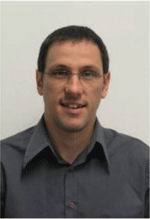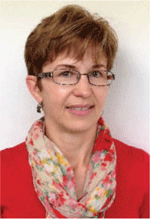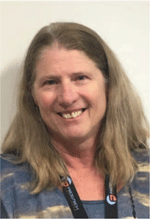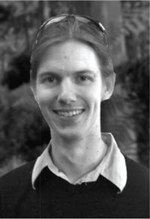A new spatially continuous basement heat flow map for NW Queensland
C. Jorand A B , K. Connors A , L. Pryer A and C. Pietrucha AA Formerly Frogtech Geoscience, 2 King Street, Deakin, ACT 2600, Australia.
B Corresponding author. Email: c.jorand@gmail.com
The APPEA Journal 59(2) 879-885 https://doi.org/10.1071/AJ18042
Accepted: 11 April 2019 Published: 17 June 2019
Abstract
A recently released open file study of the depth-to-basement and basement heat flow is presented, which covers the Queensland portion of the South Nicholson Basin and includes basins underlying the Lawn Hill Platform and Georgina Basin. The present-day basement heat flow model is derived from an analysis of basement composition, structure and history, with the crustal radiogenic and mantle heat flow assessed separately. Resulting from an integrated, iterative interpretation and analysis of a wide range of publicly available spatially continuous geophysical and geological datasets, the heat flow model reproduces faithfully sharp and high-amplitude variations of the published heat flow at small distances. Variations are replicated through the integration of interpreted basement composition and a geologically driven determination of heat production within the radiogenic crustal layer. The values of mantle heat flow based on lithosphere thickness derived from seismic tomography models are consistent with published stable mantle heat flow under terranes of similar age. The long-wavelength regional variations can be attributed to the change in the thickness of the lithosphere. Regionally, the highest values of heat flow are found where radiogenic crust is the thickest and the composition is interpreted to comprise radiogenic intrusives.
Keywords: basement composition, thermal model.

Cedric Jorand is an expert in geomechanics and thermal modelling, with over 16 years’ experience in advising the oil and gas sector on exploration risk reduction through the understanding of natural fracture development in sedimentary basins and an integrated approach to basement heat flow prediction. Cedric received a Bachelor of Science in Geology and a Masters in Earth Sciences from the University of Nice Sophia Antipolis, where he received a Doctorate of Geomechanics and Earth Sciences. co-funded by Total and Shell. in 2007. Cedric held a Research Fellow position at the French Geological Survey (BRGM), authoring public reports on the characterisation of fractures and faults in the deep boreholes of the experimental Soultz-Sous-Forets enhanced geothermal system. Cedric began his career with Frogtech Geoscience as a Basin Modeller, working on petroleum prospectively assessment in Paleozoic–Mesozoic basins worldwide. He is now a Principal Thermal Modeler and Manager of Research and Design activities. |

Karen Connors is a Managing Principal Geoscientist with Frogtech Geoscience, where she oversees the development of SEEBASE products and leads client projects. Karen holds a BSc (1986) from Dalhousie University, Canada, and a PhD from Monash University, Australia (1992). She completed a Postdoctoral Fellowship at the Geological Survey of Canada. Karen has ~30 years’ experience as a geologist, including time as a researcher, employee, in both the minerals and petroleum industries, and as a consultant. Over the last 12+ years, she has focussed on integrated interpretation of potential field data sets with seismic and other data to assess the basement control on basin evolution and implications for the petroleum prospectivity in regions around the globe. Karen is a member of the Petroleum Exploration Society of Australia and a Fellow of the Geological Society of London and the Institute of Managers and Leaders. |

Lynn Pryer is a Principal Structural Geologist and Head of Consulting Services at Frogtech Geoscience, where she has worked for the past 20 years consulting to industry while developing the trademark SEEBASE® workflow and product line. She has designed and managed projects with petroleum companies, mining companies and governments. The comprehensive workflow developed at Frogtech Geoscience is applicable to all geological systems and investigations and is especially useful for predicting tectonic controls on basin evolution. Lynn holds a BSc (1984) and MSc (1986) from McMaster University, Canada, a PhD (1993) from the University of Toronto, Canada, and completed a Postdoctoral Fellowship at the Research School of Earth Sciences at the Australian National University. She worked for the Geological Survey of Canada and the Ontario Geological Survey (Minerals Division) before moving to Australia. Lynn is a member of GSAus, GSAm, AGU, PESA, ASEG and a GSL Fellow. |

Christopher Pietrucha began his career with Frogtech in 2010 as a GIS Officer, working on production geospatial information systems (GIS) tasks. After completing significant geological projects for Frogtech’s clients in 2012, Christopher was appointed as a GIS Specialist and is responsible for leading and providing GIS technical and data activities for geological projects, developing/implementing models codes and workflows for the manipulation analysis and presentation of GIS data as well as maintaining GIS servers, multiuser databases, GIS software licenses and software installation. In 2015, Christopher moved towards co-ordinating the daily IT efforts in addition to an ongoing GIS Specialist role. Christopher has over 9 years’ experience with GIS and IT systems within the oil and gas industry. Christopher received a BSc in Environment from The University Wollongong. He previously worked at Geoscience Australia in National Mapping and Information Group under the NLII group on production work for the National Geofabric Project, working on the 1second Shuttle Radar Topography Mission Derived Digital Elevation and Surface Models and the Aushydro Surface Hydrological dataset. |
References
Anderson, J. R., Fraser, G. L., McLennan, S. M., and Lewis, C. J. (2017). A U–Pb Geochronology Compilation for Northern Australia: Version 1, November 2017. Record 2017/22. Geoscience Australia, Canberra.Artemieva, I. M., and Mooney, W. D. (2001). Thermal Thickness and Evolution of Precambrian Lithosphere: A Global Study. Journal of Geophysical Research 106, 16387–16414.
| Thermal Thickness and Evolution of Precambrian Lithosphere: A Global Study.Crossref | GoogleScholarGoogle Scholar |
Blaikie, T. N., Betts, P. G., Armit, R. J., and Ailleres, L. (2017). The Ca. 1740–1710 Ma Leichhardt Event: Inversion of a Continental Rift and Revision of the Tectonic Evolution of the North Australian Craton. Precambrian Research 292, 75–92.
| The Ca. 1740–1710 Ma Leichhardt Event: Inversion of a Continental Rift and Revision of the Tectonic Evolution of the North Australian Craton.Crossref | GoogleScholarGoogle Scholar |
Carson C.J., Hutton L.J., Withnall I.W., Perkins W.G., Donchak P.J.T., Parsons A., Blake P.R., Sweet I.P., Neumann N.L. and Lambeck A. (2011). Summary of Results: Joint GAQ-GA NGA Geochronology Project, Mount Isa Region, 2009–2010. Geological Survey of Queensland, Indooroopilly, Qld.
Frogtech (2005). OZ SEEBASE™ Study 2005. Public Domain Report to Shell Development Australia by Frogtech Pty Ltd, Canberra.
Frogtech Geoscience (2018). North West Queensland SEEBASE study and GIS. Queensland Geological Record 2018/03. Frogtech Pty Ltd, Canberra.
Geological Survey of Queensland (2011). North West Queensland Mineral and Energy Province Report. Department of Employment, Economic Development and Innovation, Brisbane.
Goutorbe, B., Poort, J., Lucazeau, F., and Raillard, S. (2011). Global heat flow trends resolved from multiple geological and geophysical proxies. Geophysical Journal International 187, 1405–1419.
| Global heat flow trends resolved from multiple geological and geophysical proxies.Crossref | GoogleScholarGoogle Scholar |
Hirschmann, M. M. (2000). Mantle solidus: Experimental constraints and the effects of peridotite composition Geochemistry Geophysics Geosystems 1, 1042.
| Mantle solidus: Experimental constraints and the effects of peridotite compositionCrossref | GoogleScholarGoogle Scholar |
Kennett, B., Salmon, M., and Saygin, E. (2011). AusMoho: The Variation of Moho Depth in Australia. Geophysical Journal International 187, 946–958.
| AusMoho: The Variation of Moho Depth in Australia.Crossref | GoogleScholarGoogle Scholar |
Kennett, B., Fichtner, A., Fishwick, S., and Yoshizawa, K. (2013). Australian Seismological Reference Model (AuSREM): mantle component. Geophysical Journal International 192, 871–887.
| Australian Seismological Reference Model (AuSREM): mantle component.Crossref | GoogleScholarGoogle Scholar |
Kirkby A.L. and Gerner E.J. (2013). Heat Flow Determinations for the Australian Continent, Release 5, Geoscience Australia Record 2013/34. Geoscience Australia, Canberra.
Roy, R. F., Blackwell, D., and Birch, F. (1968). Heat Generation of Plutonic Rocks and Continental Heat Flow Provinces. Earth and Planetary Science Letters 5, 1–12.
| Heat Generation of Plutonic Rocks and Continental Heat Flow Provinces.Crossref | GoogleScholarGoogle Scholar |
Salmon, M., Kennett, B., Stern, T., and Aitken, A. (2013). The Moho in Australia and New Zealand. Tectonophysics 609, 288–298.
| The Moho in Australia and New Zealand.Crossref | GoogleScholarGoogle Scholar |
Scrimgeour, I. R. (2013). Aileron Province. In ‘Geology and Mineral resources of the Northern Territory.’ (Eds M. Ahmad, T. Munson and M. H. Fuller). pp. 12:1–12:74. (Northern Territory Government: Darwin, NT).
Siégel, C. (2015). Heat-producing element enrichment in granitic rocks, the role of crustal composition and evolution. PhD Thesis, School of Earth, Environmental and Biological Sciences, Queensland University of Technology, Canberra, ACT.
Weber R. D., Kirkby A. L., and Gerner E. J. (2011). Heat Flow Determinations for the Australian Continent: Release 3, Geoscience Australia Record 2011/30. Geoscience Australia, Canberra.


